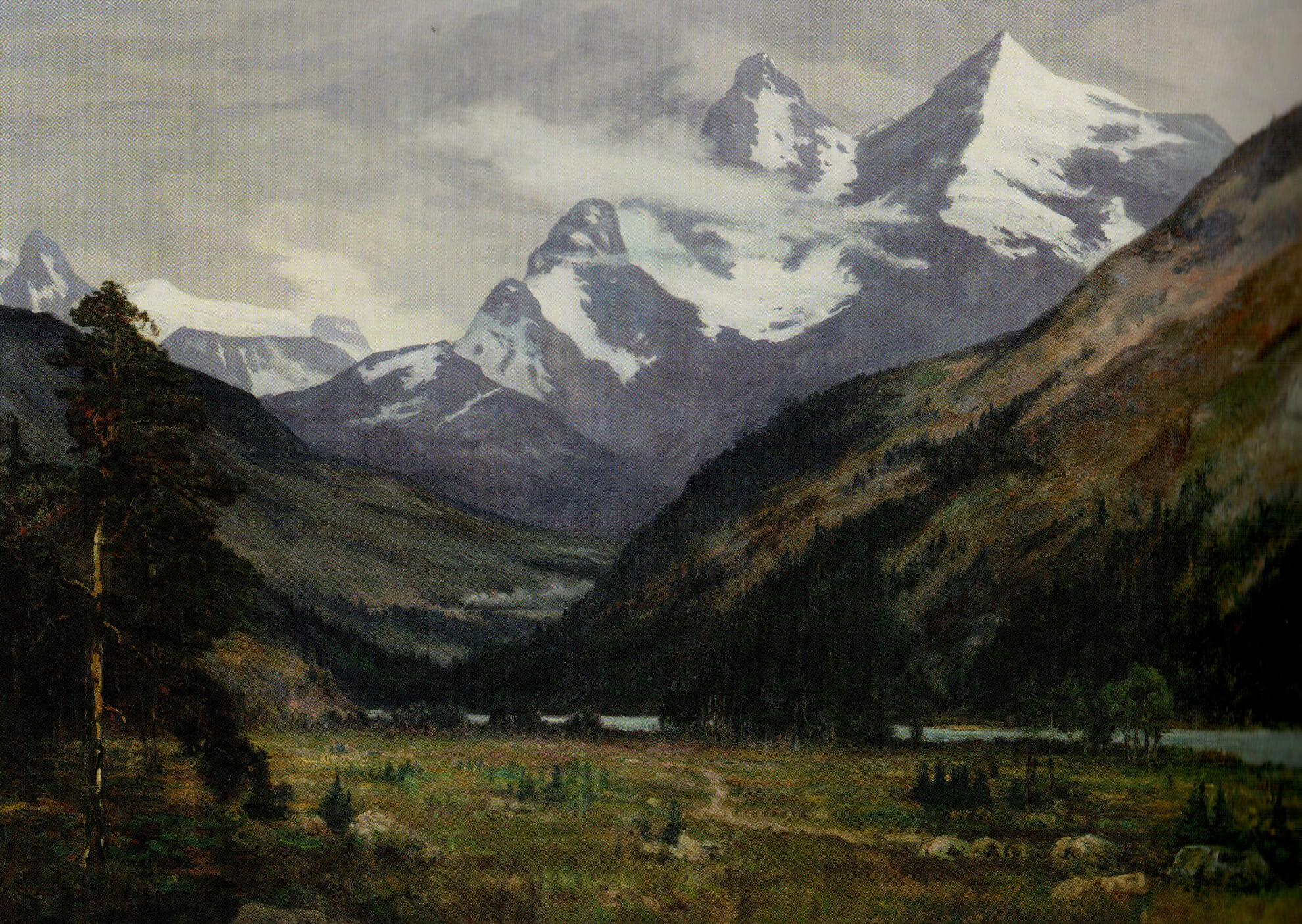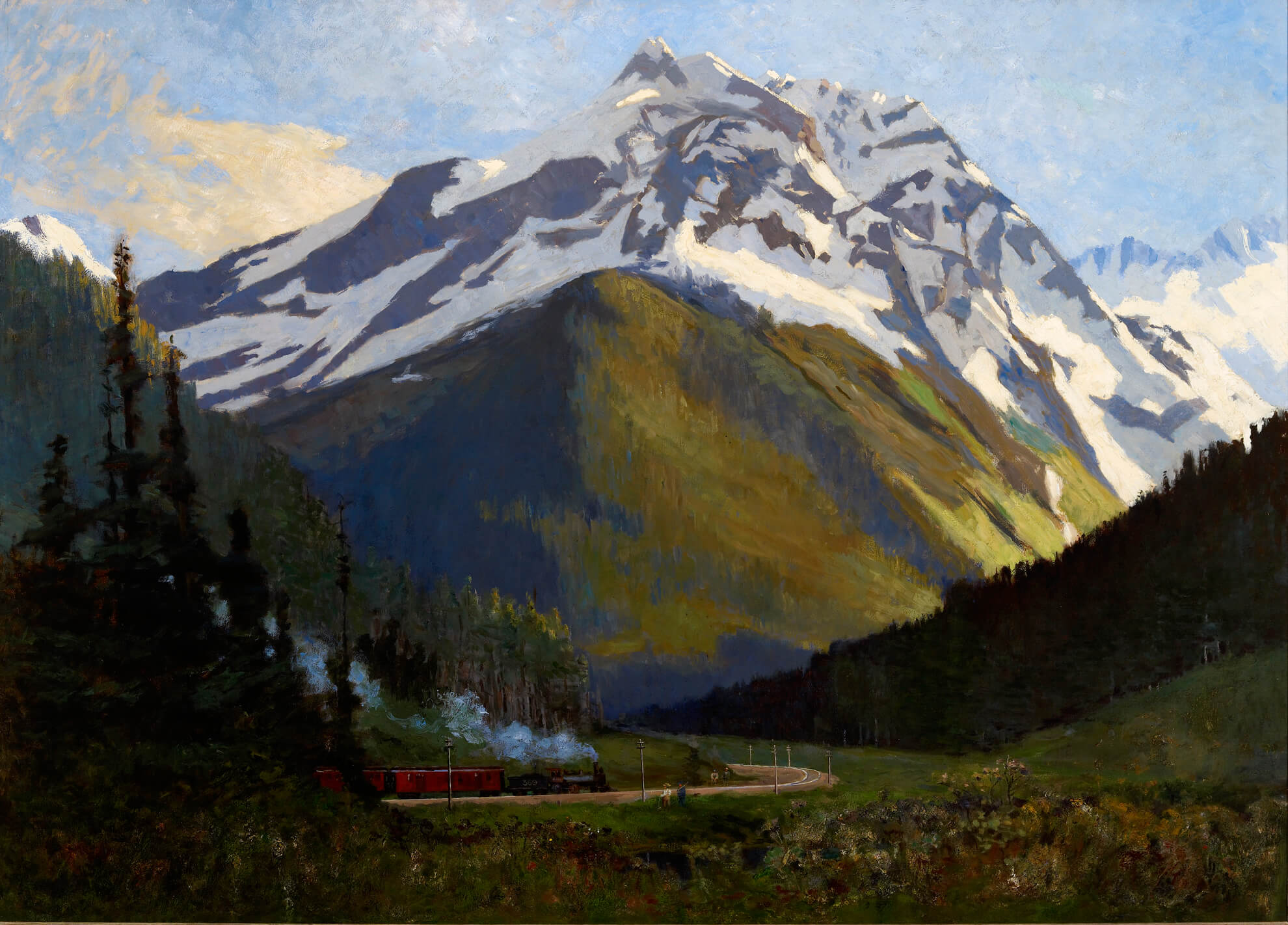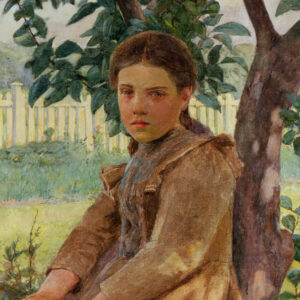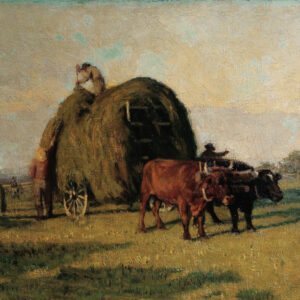In the Selkirks near Glacier House c.1894

William Brymner, In the Selkirks near Glacier House, c.1894
Oil on canvas, 152.4 x 213.4 cm
Glenbow Museum, Calgary
Between 1886 and the early 1900s Brymner painted several mountain landscapes. In the Selkirks near Glacier House is representative of these artworks. Brymner travelled to the Rocky Mountains in 1886, 1892, and 1893. He made his first trip in an attempt to establish himself as an artist capable of painting mountain landscapes; later, his work was supported by the Canadian Pacific Railway (CPR). This work is an unusually large canvas for Brymner. The view is composed to emphasize the scale of the peaks, which almost seem to press against the top of the frame. The mountains are jagged and forceful, but Brymner has softened them with clouds, and the pale grey tones in the sky echo the purplish-grey colouring of the mountains. A river cuts through the middle of the picture, drawing the viewer’s eye to small puffs of smoke that reveal the presence of a train.

William Van Horne, the general manager of the CPR, believed that paintings of the Rocky Mountains could play a critical role in promoting the region and, by extension, the railway. He was keen to work with landscape painters who were members of the Royal Canadian Academy of Arts because he wanted paintings of the mountains to be displayed in exhibitions, company offices, and the homes of company officials. Brymner was one of many artists Van Horne commissioned to depict the mountains; other artists who created works include Lucius O’Brien (1832–1899) and John Arthur Fraser (1838–1898). Though Brymner embraced the project, he found painting the mountains challenging, perhaps because of their sheer size. In an 1892 letter to Van Horne, he wrote, “This place is as fine as can be. I have never seen anything much more beautiful in my life or difficult to paint. I hope what we have done will prove satisfactory although I must say I have been very blue about it often.” Brymner’s work evidently did prove satisfactory, and he created at least twenty mountain landscapes, many of which he likely painted when he returned to Montreal using the drawings and painted sketches from his travels.
Many of Brymner’s mountain landscapes, such as Ottertail Range, 1894, share a similar composition with In the Selkirks near Glacier House. The canvas of Ottertail Range is unusually long, enabling a more expansive view of the peaks, which, like the mountains in In the Selkirks near Glacier House, push against the top of the image to better astonish the viewer. In several of Brymner’s other mountain paintings, such as Hermit Mountain, Rogers Pass, Selkirk Range, 1886, and Mount Cheops from Rogers Pass, c.1898, the mountains dominate but the scene also includes a small train, a view of the tracks or a road, or a small village or camp.
Brymner represented some of the world’s most awe-inspiring mountains with signs of newly built infrastructure, reminding his viewers that the CPR and, by extension, Canadians, had successfully built a railway through the Rockies. These paintings were simultaneously landscapes of extraordinary natural beauty and landscapes demonstrating the progress of settlement in the Canadian West. They did not acknowledge the violence of colonialism: they were seen as representations of a national achievement. Decades before the Group of Seven rose to prominence, Brymner and his peers were already exploring the Canadian landscape as a critical subject for nation building in art.

 About the Author
About the Author
 More Online Art Books
More Online Art Books
 Acknowledgements
Acknowledgements